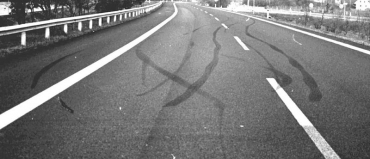We all are quite familiar with the use of fingerprints to identify suspects and potential criminals in police investigations. With modern evidence tracking software, we can use facial recognition, digital evidence, and other modern techniques to find the bad guys.
However, sometimes good old fashion evidence tracking can help solve the case. Take for instance using tire tracks to help identify vehicles that can be traced to a crime.
Snow is a medium of variable quality for track reproduction. The best quality track usually occurs in snow with moderate to high water content at just freezing temperatures. Water can be either frozen or liquid at 0 deg. C., and the right combination can provide excellent results. Colder snow will still yield results that will allow for track design determination, but the chances of fine accidental characteristics will become less as the temperature drops and as the age of the snow increases.
In addition, often the tire stance and wheelbase record of the suspect vehicle can be determined at the scene, especially if left in snow. With the measurements of the tire centers from left to right for both axles, and the wheelbase from front to back, one can gain much knowledge of a culprit vehicle from simply a dusting of snow on cold pavement.
Tires can range in tread designs the same way that footwear companies continuously vary their shoe tread designs. This variation along with the length of time tires remain on a vehicle means that they offer great value in crime scene examination, even if no accidental characteristics can be determined in the tracks. A bonus is the chance that tire designs may be mixed on the same vehicle.
In recording tire scenes, one must remember that at least two meters of track should be recorded by photographic means. To do this accurately, not only must a scale and track number be added to the photo view, but also a tape measure running the length of the track should be visible to allow the final photos to be correctly sequenced.
While photographing snow tracks is the normal method of recording, for accurate reproduction of accidental characteristics, one must cast the track, or at least sections of it. Snow wax and sulphur are two methods normally utilized, and both require training and practice to yield quality results.
The comparison of tire tracks and suspect vehicle tires must follow a protocol that has been described in detail by Lawren NAUSE in his book ‘Forensic Tire Impression Identification’, and by Peter McDONALD in his book, ‘Tire Imprint Evidence’. Both books are required reading for anyone attempting to offer an opinion in court on this type of evidence.

